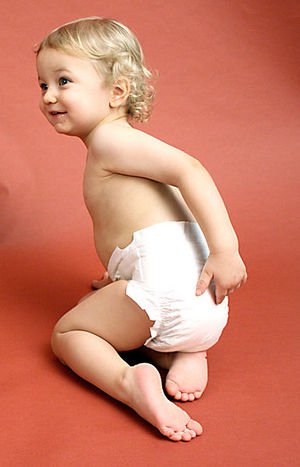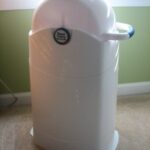There weren’t many things that surprised me about parenting when my daughter was a baby. But baby poop-such an everyday part of life as a diaper-changing mama-actually surprised me. Plenty of moms go into motherhood without being sure of what’s normal (and what’s not) among baby poops. Here’s what you can expect of a healthy baby’s poop-and some signs that something is amiss.
Normal Baby Poop
Consistency
Poop from a healthy baby under one year of age should be soft and mushy. A lot of first-time parents and caregivers make the mistake of thinking their babies have diarrhea, when the babies are in fact just experiencing normal bowel movements. Expect your baby’s poo to have a consistency somewhere between mashed potatoes and Play-Doh. A grainy texture is also normal. While this consistency would be unusually loose for an adult, it’s actually very normal for a child under one year of age.
Color
Grown-up poo tends to be consistently brown in color, so you might be alarmed to see some other colors coming out of your baby’s bum. Baby poo can come in a whole range of colors. Breastfed babies often have poo that is yellow-ish to tan in color. After your baby has started solids, expect rainbow poop-his carrots or green peas may come out the other end looking almost completely unchanged!
Smell
Healthy baby poop tends to have a very mild odor, especially if the baby is breastfed and hasn’t started solids yet. It won’t be odorless, but will smell inoffensive and slightly sweet. After he starts solids, your baby’s poop will start getting a little stinkier, but it shouldn’t be as strong-smelling as grown-up poop until he’s a year or two old.
Abnormal Baby Poop
Consistency
Baby poo that is either too liquidy or too solid might be a sign of a problem. While baby poop tends to be soft, it shouldn’t be downright aqueous-that’s a sign of diarrhea. It’s also not normal for it to be frothy or foamy (this is a sign of an infection, which needs to be treated by a doctor). Very hard or pellet-like poos are signs of constipation and need to be addressed with extra fluids and perhaps a bit of juice-and talk to your doctor if they persist.
Color
While baby poop can surprise you with its rainbow effect, it’s important to know what colors are distinctly not normal. While blackish, tarry poop is normal for newborns (it’s part of their first bowel movements, called meconium), it’s a sign of internal bleeding in a baby older than three days. Tiny amounts of blood can be a sign of mild constipation, but anything more than that is also a big red flag. White or gray stools in a baby are also an ominous sign that something is amiss in baby’s body, so call your doctor if you notice these symptoms.
Smell
Nobody’s poop smells great, but really nasty-smelling poop in a baby is a sign that something’s wrong. If your baby’s diapers smell bad enough that you’re having to pinch your nose or that you have a hard time tolerating the smell, it might mean he has an infection or a food allergy. Poops smelly enough to stink up a whole room are a sign that you need to call your doctor, especially they’re also liquidy, discolored, or accompanied by fever and pain.
It’s not always easy to tell the difference between normal baby poop and abnormal bowel movements, especially since babies have such different digestive processes than their parents. If you’ve got any questions about your baby’s bowel movements, get in touch with your pediatrician for advice. Here are some online resources that can offer more information about normal (and abnormal) baby poop.
Mayo Clinic: Baby Poop- What’s Normal?
BabyCenter: Baby Poop Guide
BabyCenter: Baby Poop- a Visual Guide (Warning, these are real pictures and kind of gross!)






